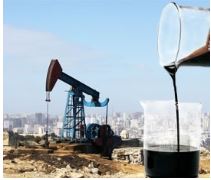Kline projects that global crude oil demand to be about 89 MMbbls/d (million barrels per day) by 2030. Of this, the share of heavy oil resources is expected to be about 15 MMbbls/d. Current global utilization of heavy crude oil stands at about 11.5 MMbbls/day. Considering the decline in production in the coming years, an additional 7 MMbbls/d of capacity will have to be added by 2030 to meet the global demand. Heavy oil, if effectively exploited with partial upgrading, could emerge as one of the major factors in meeting the world’s energy requirements.
Heavy oil has been traditionally processed at the refinery by full upgrading technologies. The major issue is transporting the heavy oil to the refinery. This is resolved by either utilizing capital intensive full upgrading technologies at the wellhead or using diluents to get the crude to pipeline specs; thereby, adding costs for diluent losses and shipping to the wellhead. Partial upgrading technologies tackle these problems by converting only a portion of the vacuum residue in heavy oil, thus enabling it to meet pipeline specifications, at reduced capital investment levels and ideally without the need for diluents. Partial upgrading technologies provide a cost-effective solution for transporting heavy oil from remote locations to refineries.
There are various emerging heavy oil partial upgrading technologies. In order to create an enduring long term strategy, companies need to identify the most effective amongst them. According to Kline’s new Partial Upgrading of Heavy Oil: Evaluation of Commercial and Emerging Technologies report, technologies with the highest potential for commercialization include Hi-Q Process – MEG, Roseflow Process – KBR, Value Creation Technology – Value Creation, Group IYQ Process – ETX Systems, and Aqua Conversion Process – PDVSA and HTL.

Energy needs are increasingly prevalent worldwide. In order to meet the growing demand, companies have resorted to a partial upgrading of heavy oils. As global demand increases, the means and infrastructure in place to meet these demands will see pervasive changes and a plethora of new practices coming into the fold.

